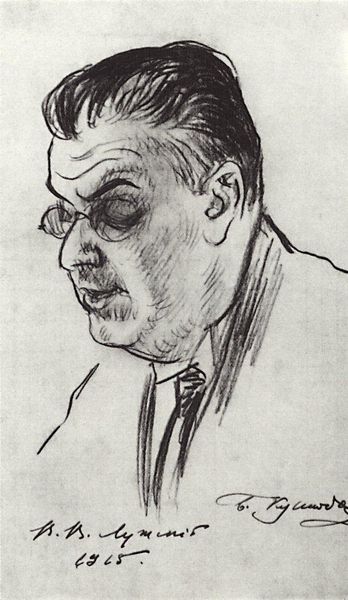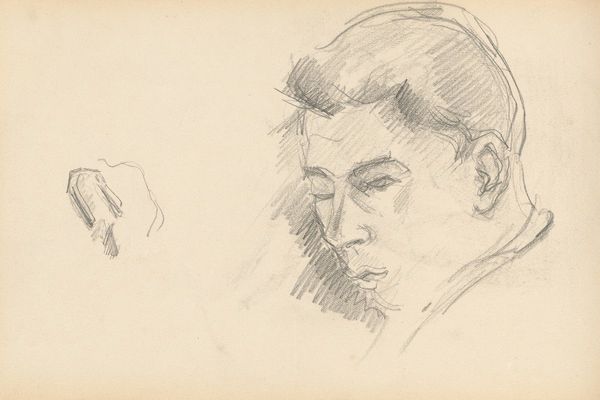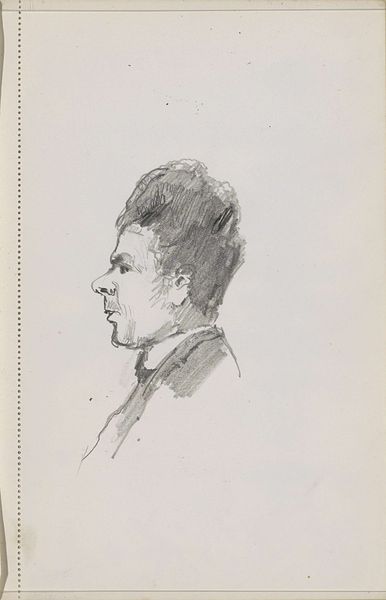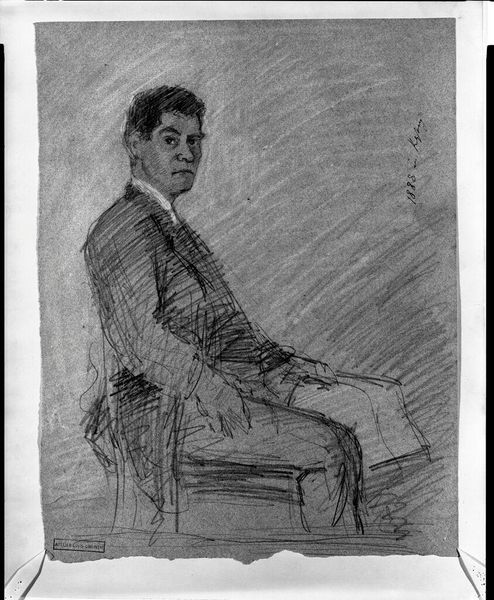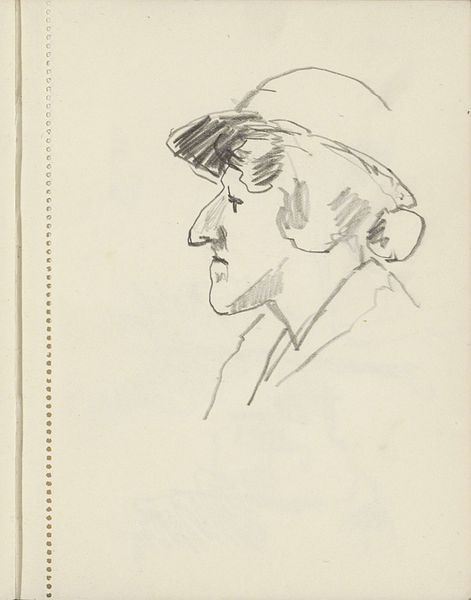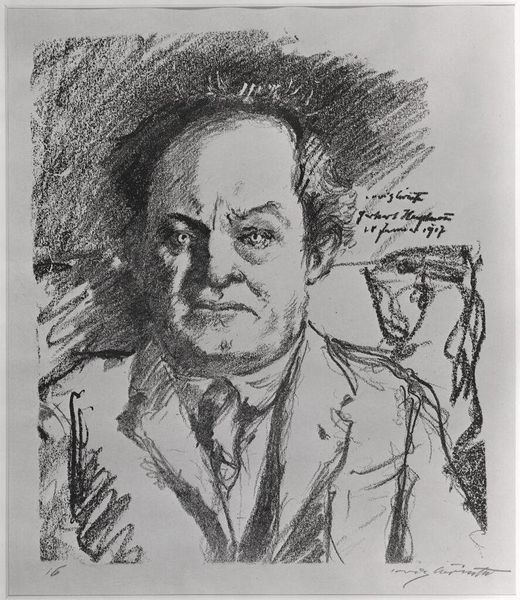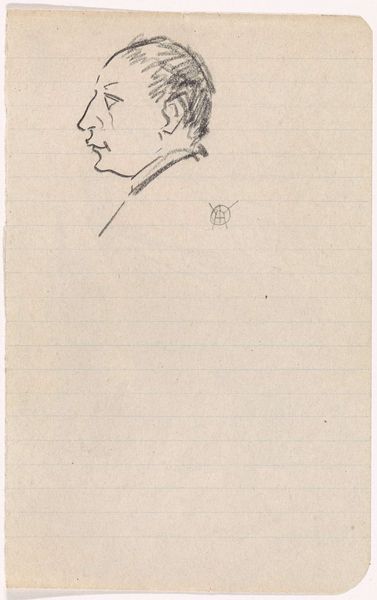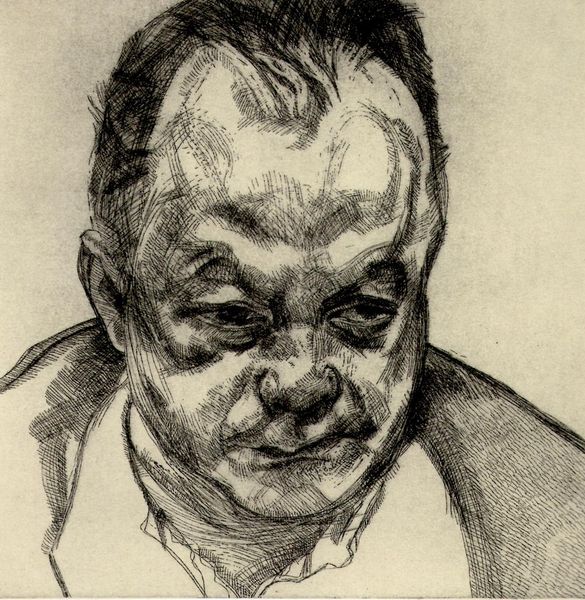
drawing, graphite, charcoal
#
portrait
#
drawing
#
expressionism
#
graphite
#
charcoal
Copyright: Public domain
Curator: Before us is Boris Kustodiev’s “Portrait of Ivan Moskvin,” created in 1914 using graphite and charcoal. Editor: There’s an immediate vulnerability in those charcoal lines, wouldn't you say? It’s stark. It looks quickly rendered, but captures something deeply human. Curator: Consider the dual nature of portraiture at this time, commissioned for public recognition but often privately bartered or even kept—revealing much about social status and the artist’s own material aspirations during pre-revolutionary Russia. Kustodiev likely accepted commissions such as these as part of his professional income. Editor: Absolutely. Yet the semiotics of the glasses are very clear: intelligence, access to learning and knowledge, maybe even a certain stuffiness! It draws my attention immediately to the play of light across them. The stark contrast in values makes this composition more dynamic. The light source reveals much about Kustodiev’s use of form and texture in his drawing technique. Curator: The loose style suggests an intimacy between the artist and his subject. Moskvin was a celebrated actor, known for embodying folk characters—this drawing’s creation might have been tied to solidifying the actor’s stage persona into public perception. I would venture to suggest Kustodiev hoped it could even gain entrance to Moscow’s theatrical circles. Editor: The seeming lack of rigid formality seems notable, given Moskvin’s public profile. It’s more like an impression. The very materials themselves--the graphite and charcoal, feel immediate, allowing the hand of the artist to truly shine and bringing us closer to the humanity of the subject. Curator: Examining such drawings provides crucial insights into the mechanics of art production itself and even how social connections operated among creatives in early 20th-century Russia. Editor: I concur! We see beyond representation here; the very lines carry their own weight and resonance, informing our own reading of humanity.
Comments
No comments
Be the first to comment and join the conversation on the ultimate creative platform.
